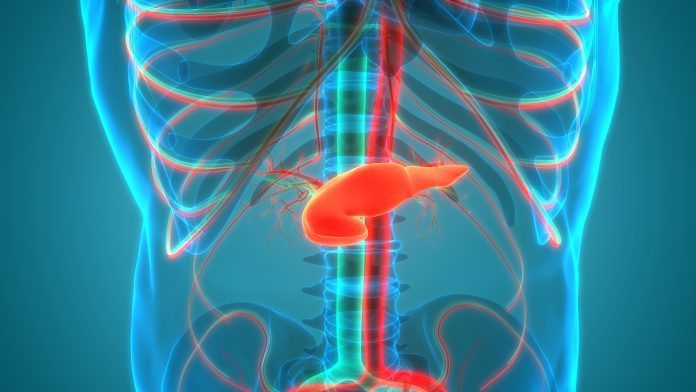
Effective new treatment for pancreatic cancer could be on the horizon thanks to researchers from Oregon State University, who have developed a new therapy for the deadly condition.
A preclinical study conducted by researchers at Oregon State University (OSU) and their collaborators at Oregon Health & Science University may have identified a promising new treatment for pancreatic cancer, a form of the disease that has the lowest survival rate among all malignancies.
The study findings are published in Pharmaceutics.
The landscape of pancreatic cancer
Data from the American Cancer Society demonstrates that around one in 64 people will be diagnosed with pancreatic cancer during their lifetime, with Pancreatic ductal adenocarcinoma (PDAC) associated with more than 90% of pancreatic cancer cases. Only 11% of patients with PDAC liver for at least five years following their diagnosis.
Adam Alani of the OSU College of Pharmacy, who led the preclinical study, commented: “PDAC is rarely diagnosed early enough for surgical resection to be a realistic option. There aren’t markers for early detection. The molecular and cellular features of the tumours are aggressive and have multiple levels of therapeutic resistance. We need new treatments and are very excited by the promise our findings show.”
PDAC tumours are especially challenging to treat, as similar to other tumours, they contain regions of hypoxia – where the concentration of oxygen is low. This causes hypoxia cancer cells to grow slowly, making them less responsive to the drugs employed to combat them.
Alani said: “The approach that we took in this work is to exploit the physiology of PDAC being a highly hypoxic tumour. We used a hypoxia-activated drug as a targeting strategy; such an approach can result in a better safety and efficacy profile for PDAC patients. Our findings are a strong foundation for the strategy’s clinical application.”
Enhancing treatment for pancreatic cancer
To develop their treatment for pancreatic cancer, the team utilised microfluidic cartridges to create a lipid-based nanocarrier in which a PDAC “prodrug” could be loaded. A prodrug is a pharmacologically inactive compound that is metabolised in the body, becoming an active drug. The liposome – a lipid-based drug delivery platform – was loaded with the prodrug vinblastine-N-oxide in their study.
Vinblastine-N-oxide, otherwise known as CPD100, transforms into the drug vinblastine, a microtubule inhibitor employed to kill cancer cells when activated by hypoxia. CPD100 has a low efficacy when used on its own because of how rapidly it is cleared from the body, having a half life of only 30 minutes. However, when loaded into a liposome, its halflife is enhanced by more than a factor of ten. The study results demonstrated that, in cancer cell cultures, liposomal CPD100 outperformed regular CPD100.
Additionally, the investigators performed tests on animal models. Here, mice with pancreatic cancer were assigned to six treatment groups: the mice received either regular CPD100, liposomal CPD100, vinblastine, or gemcitabine (a standard-of-care drug for PDAC patients), liposomal CPD100 plus gemcitabine, or no treatment.
The most significant effects were displayed in mice treated with liposomal CPD100 and liposomal CPD100 plus gemcitabine. Their tumours decreased by the most weight compared to the untreated mice, the mice that only received gemcitabine, and the vinblastine mice.
“We have also shown that our approach can remodel the pancreas stroma, which has been correlated with PDAC prognosis and progression,” Alani said.
Pancreas Stroma
Stroma is a connective tissue located just below the surface of the organ and helps to hold the pancreas together. Stroma is comprised of cells, many being fibroblasts that provide strength and shape to the tissue. The stroma also includes blood vessels vital for carrying nutrients and lymphatic channels that remove waste and excess fluid.
The appearance of stroma can change due to cancer, taking on a formation known as desmoplasia. Moreover, the stroma associated with PDAC has a range of features that make it the perfect environment for pancreatic cancer cells to thrive and metastasise. The team concluded that remodelling stroma might make it more difficult for cancer cells to spread and may help develop a future treatment for pancreatic cancer.






















